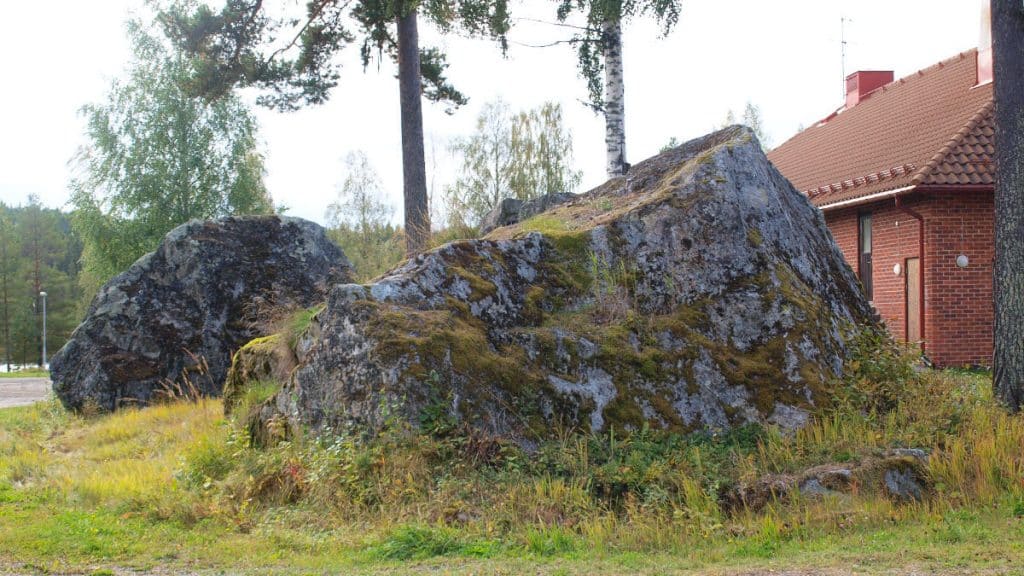Theme Ice Age
Theme Ice Age aims to show how the Ragunda landscape has been affected by the ice ages over the past 2.6 million years.
Istiders påverkan på Ragundas landskap
Ice age is a period during which the temperature is so low that the ice keeps growing to form larger or smaller ice sheets. Some of the ice sheets are so large that we call them inland ice. The ice covering Antarctica will give you an idea of how an inland ice may appear.
Over the past 2.6 million years there have been several ice ages, differing in duration. The three most recent lasted for more than 100 000 years. In northern Europe the most recent one is called the Weichselian and the second most recent one Saale.


In between ice ages mammoths were grazing in Ragunda
An ice age is never a constant period of ice sheets. In the course of an ice age the climate will undergo several changes. When the weather is colder the ice sheet will grow and in warmer period it will melt and may even disappear altogether.
About 40 000 years ago there was a period in Jämtland free of ice. At the time mammoths wandered here and were grazing, enjoying the grass, bushes and herbs growing on the tundra. We know that since in 1975 a mammoth’s tooth was found in a sandpit in Kånkback. It is either from a young mammoth male or a cow. The tooth is the best preserved in Sweden and on display at the museum Jamtli in Östersund.
The water from the melting ice contributed to new land of sand, gravel and stones
About 20 000 years ago the thick inland ice covered the land that today is Sweden. In due course the ice melted. Geologists are not entirely certain but Ragunda was probably free from ice some 10 000 years ago.
When the ice melted enormous masses of water rushed at full force through the landscape. The water washed away light material such as sand and gravel, in some places to such an extent that only very big boulders were left in place. You can see giant boulders at several of the sites in the geopark, including Nornan, Getgrottan and Döda fallet.
In other places were formed ridges and large areas covered with sand and gravel, deposited by the water from the melting ice.
Once the surge of water slowed down and no longer was capable of carrying that much material, the sand and gravel sank to the bottom. Some examples of land areas built up by material from the melting ice are the ridge Getryggen and the sandy plateau in Döviken – Zorbcenter.

Ragunda rocks gone astray
Geologists have found rocks from Ragunda in northern Germany and in the Netherlands. How did they get there, by lorry or boat perhaps? No, they were carried by the inland ice as it moved southwards. When the ice melted the stones and rocks sank to the bottom.

Loose blocks of ice formed kettle holes and lakes
In the area around Getryggen there are kettle holes and kettle lakes, water-filled kettle holes. They were formed when ice blocks came loose and were embedded in the material that the melting ice had left behind. The material solidified around the blocks of ice and when the ice then melted, holes - kettles - were formed of the same size as the ice blocks had been.
If you want to see more kettle holes there is one at Fors skogskyrkogård.









